The 2S4 Tyulpan ("tulip") is a Soviet 240 mm self-propelled heavy mortar, largest in use today. 588 were manufactured by Uraltransmash and it had been active since 1972, exported to Czechoslovakia, Iraq, and today is still used by Syria Kazakhstan and Russia which possesses 40 in active service today, 350 in reserve. They were deployed in the Soviet–Afghan War, Iran-Iraq, First and second Chechen wars, Syrian Civil War and recently in Ukraine.
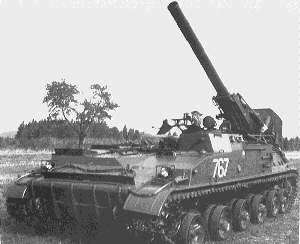 After WW2, the Soviet Union developed two types of heavy infantry mortars. One was a 160mm, the other 240 mm, both conventional and breech-loaded designs. The concept of heavy mortar, self-propelled was obvious due to the weight and size of these ordnance. It was simply not manageable by a foot crew. Their projectiles alone, notably for the M-240 just could not work in the field as "infantry weapon". A self-propelled tracked chassis at first was looked forward to, with the ordnance installed in the open on the chassis. This was preferred to an enclosed superstructure or turret as too complicated.
After WW2, the Soviet Union developed two types of heavy infantry mortars. One was a 160mm, the other 240 mm, both conventional and breech-loaded designs. The concept of heavy mortar, self-propelled was obvious due to the weight and size of these ordnance. It was simply not manageable by a foot crew. Their projectiles alone, notably for the M-240 just could not work in the field as "infantry weapon". A self-propelled tracked chassis at first was looked forward to, with the ordnance installed in the open on the chassis. This was preferred to an enclosed superstructure or turret as too complicated.
The base idea was to fire while pivoting its base at the vehicle's rear, while anchored in the ground thanks to massive recoil-absorbing base plates. This enabled to create a lighter chassis, and prime mover for better tactical mobility. Designers planned to use a common chassis already proven on the 2S1 Gvozdika self-propelled howitzer, the recoil was such that it was not found robust enough. At the time this was calculated to 400 tonne-force.
A formal agreement to start this design and project was signed on July 4, 1967. It was based on preliminary design already started at OKB-3 experimental design bureau in 1966 under G. Yefremov. The engineers team came from the design bureau of the Perm Machine Building Plant V. I. Lenin. The base concept was to use the M-240 towed mortar and adapt it to a chassis. The M240 was first studied back in 1944, formally adopted in 1950. The M-240 production started in 1958 but built in limited numbers, with perhaps 300 total.
An initial batch of three vehicles was completed in mid-1969. They started factory trials until October. The new weapon system, following Soviet tradition on self-propelled guns was named 'Tyulpan' (Tulip). It was officially accepted into service with in 1972, but not showed on May parade however, as production only commenced in 1974. Its first public appareance was in 1975. NATO observers designated it "M-1975" but it was known around since with its GRAU designation 2S4 or simply "tulip" by the troops facing it.
The driver is seated on the left side of the hull. The commander is located directly behind him but in a raised armored cupola, outfitted with vision blocks for preipheric vision. The whole block was fixed, but there was a single episcope on a reotating plate on the rear-opening hatch. This cupolad received a solid ring skate mount to install the standard 7.62 mm PKT machine gun with 1500 rounds, to be fired either fully remotely of with the commander buttoned down. This was its only close defence armament, with an infrared searchlight mounted at its left. The rest of the crew consisted of three support troops to operate the mortar, not carried aboard but in a separate armored personnel carrier, part of the unit support (see later).
Protection was minimal as the vehicle was supposed to be engaged in rear line only. The Armor provides protection against small arms fire, artillery splinters, so an estimated 10 mm forward and 6mm elsewhere. There were no smoke dischargers either. The vehicle is presumed to have NBC protection as well as standard (Nuclear, Bacteriologic, and Chemical) with sealing of all hatches and overpressure (collective).
As for performances, the 27.5 tonnes vehicle coild reach 60 kph on flat, for a range of 500 km on average, and tested able to climb a Gradient of 60%, negociate a side slope of 40%, climb a vertical step of 0.7 m, gap a trench 3 m wide, or ford 1 m of water without preparation. As per tactical mobility, the vehicle was not air-droppable and only could be carried in a heavy duty plane such as the LL-76.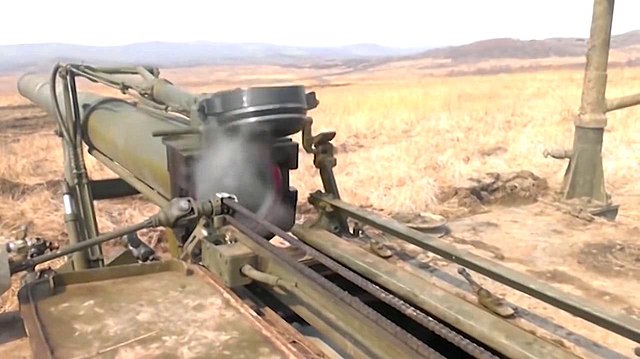
Reloading
The main reason of the design was a massive 4,150 kilograms (9,150 lb) mortar loaded from the breech end, which needed to pivot the tube into a horizontal position, locked afterwards by a simple breechblock. It needed a 11-man crew total, and needed 25 minutes to setup, then could fire at circa one round per minute. The self-propelled variant 2S4 kept both the tube and breechblock (LP-40) but the base plate was heavily modified and new gun-laying gears and drives systems allowing a 41° traverse in azimuth when elevated to the maximum extent. It went down to 10° traverse at the lowest. The range went from 50° to 80°. The tube measured 5 metres (16 ft) for 1,100 kilograms (2,400 lb) with its breechblock, and with its cradle and plate, 3,300 kilograms (7,300 lb) overall.
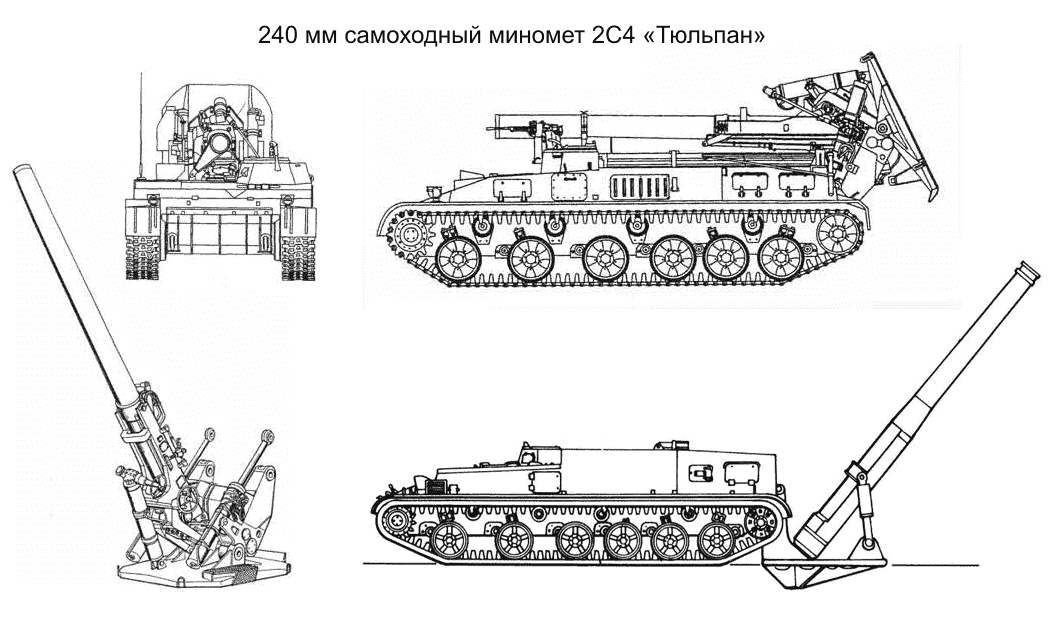
2S4 4 view drawing, notably with mortar extended
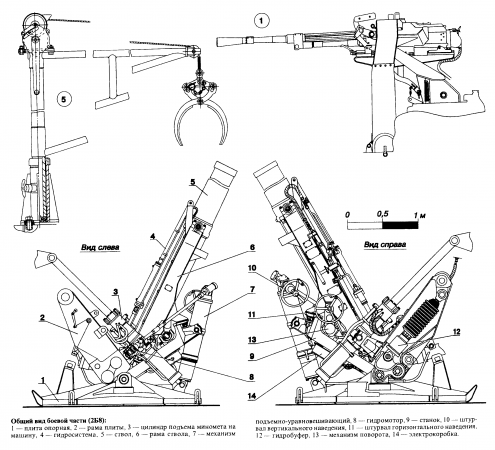
Tulypan mortar detail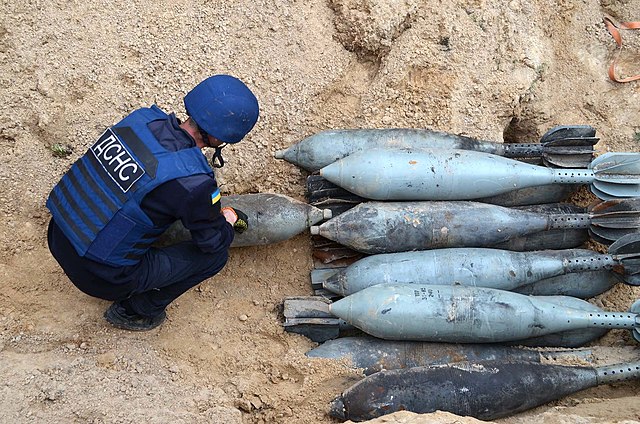
Disposal of chemical 240mm ammunitions in Chernihiv Oblast, 2022

240 mm Shell
-High-explosive (HE) 130 kilograms (290 lb) 53-F-864 mortar shell
-Addition of a GMWZ-7 fuze delayed/contact.
-Five-part propelling charge system to increase range by a muzzle velocity from 158 to 362 metres per second (520 to 1,190 ft/s)
-Range of up to 9,650 metres (10,550 yd).
-ARM-0-3WF2 (3WF2) using the 4BN56 propellant charge and carrying a 228 kg HE warhead 3F2 'Gagara' to 18 kilometres (11 mi).
-3O8 'Nerpa' cargo mortar round with 14 parachuted submunitions/fragmentation warheads
-"Sayda" incendiary round.
-Armor-piercing ammunition (no type given in sources)
-Laser-guided round (same) -Chemical rounds (same, plus treaty ban).
Indeed Russia stated both its chemical and tactical nuclear munitions were removed from service in the 1990s.
-The 3BW4 round was tipped by a 3B4 nuclear projectile (yeld 2 kt).
-The Rocket-assisted 3WB11 (3B11 projectile, RD-14 warhead, 3kt, 3M15 rocket motor).
Development of further nuclear warheads suffered for the limited caliber of the M-240. Only attempts at miniaturization today would enable larger yeld warheads, or just more versatile oens. In addition these rounds are much heavier, and thus, had a lower range (classified) so some NATO observed qualified this additional tactical utility of quetionable at best.
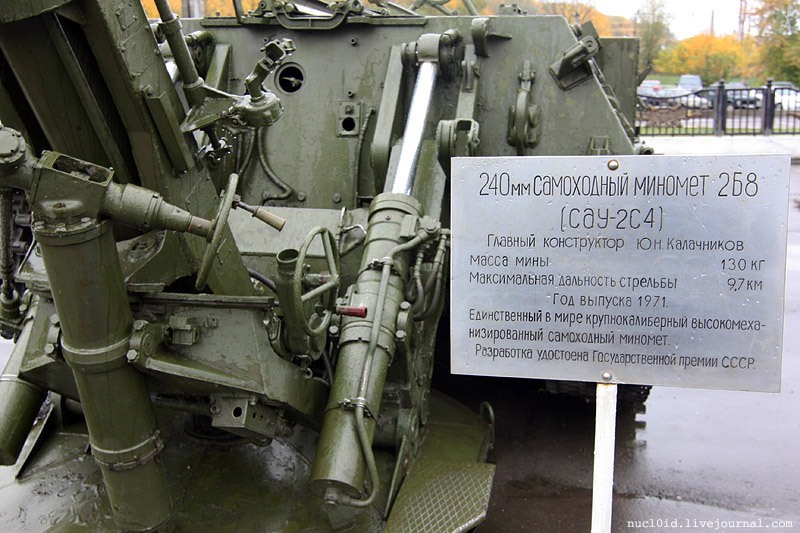
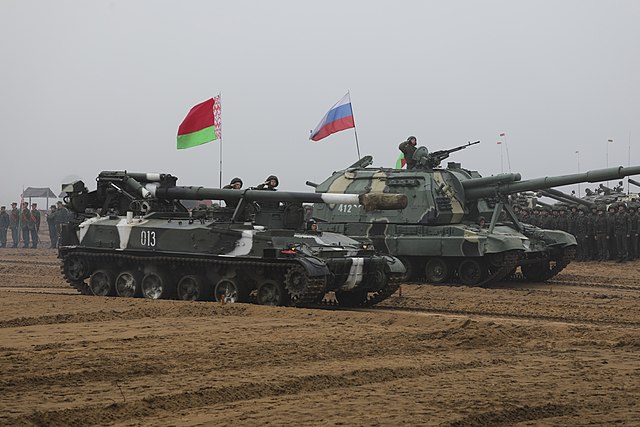
Training and demonstrations on 17 September 2021. The ceremony was attended by the Deputy Chief of the General Staff of the Armed Forces of the Russian Federation, Colonel General Sergei Istrakov, the Minister of Defense of the Republic of Belarus, Lieutenant General Viktor Khrenin, and the Deputy Commander of the Air Assault Troops of the Armed Forces of the Republic of Kazakhstan, Colonel Viktor Zhitnik.
At the end of the award ceremony, a solemn march of columns of equipment of the units taking part in the West-2021 SSU took place. Samples of armored vehicles of the ground forces of the Republic of Belarus and the Russian Federation passed in front of the podium, these are the main battle tanks T-72B and T-80U, infantry and airborne combat vehicles BMP-2 and BMD-4, cannon artillery 2S5 and 2S19 "MSTA-S", jet BM-21 Grad and Tornado-G multiple launch rocket systems.
The 2S4 saw action in Afghanistan and Chechnya, where it excelled at destroying high placed fortified positions and bunkers, or toppled cavern entries. However its extreme firepower was marred by its slow rate of fire and total lack of protection. It was reported used by the Syrian Army during the 2012 bombardment of Homs (or the towed 240 mm mortar M240) and it's possible that Russian chemical rounds were passed onto Syria. OSCE observers in Donbas spotted one from an UAV, serviced by the Donetsk People's Republic on 4 July 2015. By May 2022 one such system was reported used in the Donbas and one destoryer by an Ukrainian counter-battery fire, another in December. As of today, according to Oryx Spienkop, 26 were destroyed, one damaged after OSINT cross-data as of today (November 2023).
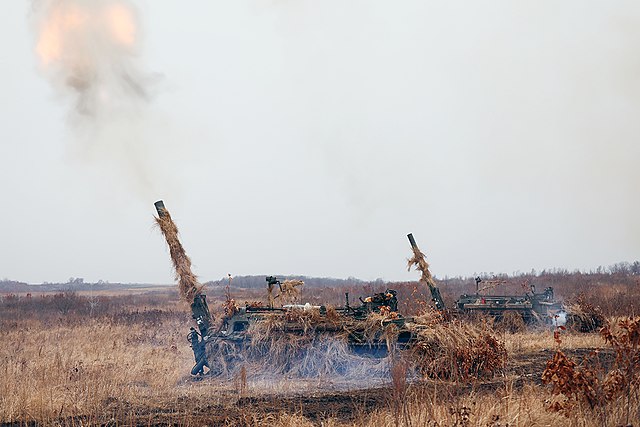
305th Artillery Brigade training in 2020
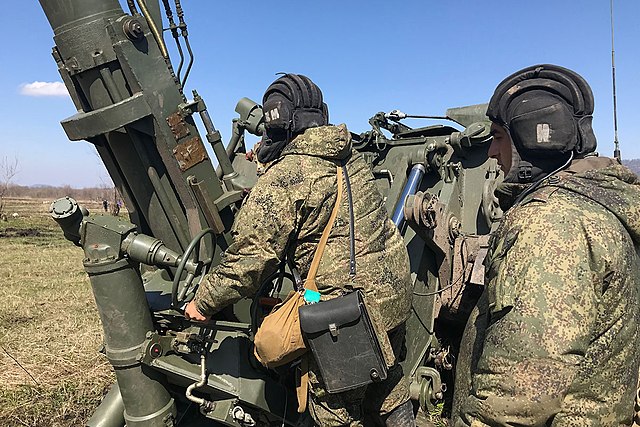
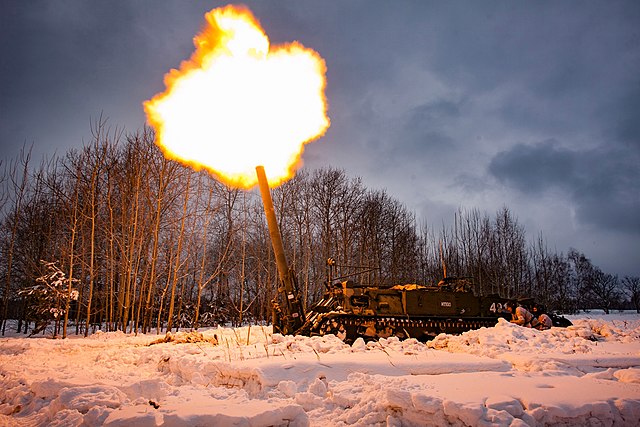
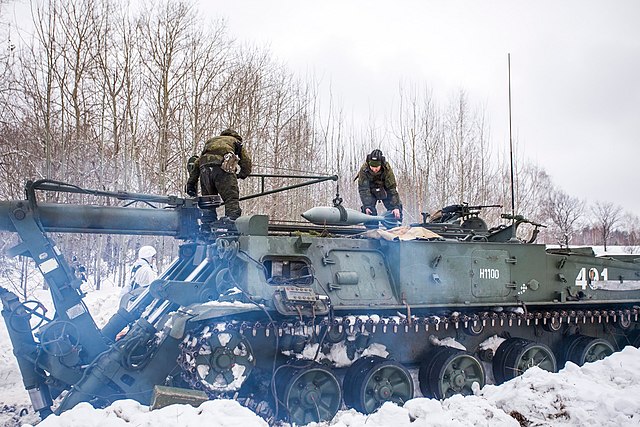
2S4 Tulypan in winter exercize
40 in active service with Russia (15 left?) 350 in storage likely to be refitted for service. Russian presented a modernized variant in 2017 with new lighter barrel, faster hydraulic recoil mechanism, updated communication systems, new GPS for better accuracy and new displays, enhanced fire-control system. Likely called 2S4M it is still to enter service, or an upgrade of those in storage planned.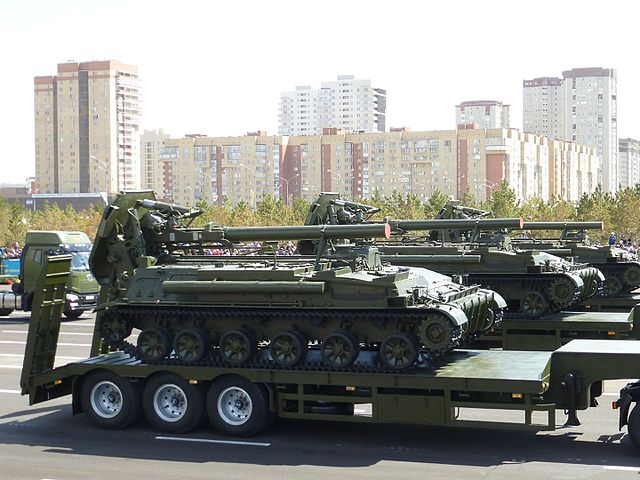
Three seen in a parade, status and exact numbers unknown.
armyrecognition.com
On nationalinterest.org
globalsecurity.org 1
globalsecurity.org specs
armscontrol.ru/
CC photos
World's heaviest Mortar "Tulpan"
tass.com/
eurasiantimes.com
3D model on turboskid
Development
 After WW2, the Soviet Union developed two types of heavy infantry mortars. One was a 160mm, the other 240 mm, both conventional and breech-loaded designs. The concept of heavy mortar, self-propelled was obvious due to the weight and size of these ordnance. It was simply not manageable by a foot crew. Their projectiles alone, notably for the M-240 just could not work in the field as "infantry weapon". A self-propelled tracked chassis at first was looked forward to, with the ordnance installed in the open on the chassis. This was preferred to an enclosed superstructure or turret as too complicated.
After WW2, the Soviet Union developed two types of heavy infantry mortars. One was a 160mm, the other 240 mm, both conventional and breech-loaded designs. The concept of heavy mortar, self-propelled was obvious due to the weight and size of these ordnance. It was simply not manageable by a foot crew. Their projectiles alone, notably for the M-240 just could not work in the field as "infantry weapon". A self-propelled tracked chassis at first was looked forward to, with the ordnance installed in the open on the chassis. This was preferred to an enclosed superstructure or turret as too complicated.
The base idea was to fire while pivoting its base at the vehicle's rear, while anchored in the ground thanks to massive recoil-absorbing base plates. This enabled to create a lighter chassis, and prime mover for better tactical mobility. Designers planned to use a common chassis already proven on the 2S1 Gvozdika self-propelled howitzer, the recoil was such that it was not found robust enough. At the time this was calculated to 400 tonne-force.
A formal agreement to start this design and project was signed on July 4, 1967. It was based on preliminary design already started at OKB-3 experimental design bureau in 1966 under G. Yefremov. The engineers team came from the design bureau of the Perm Machine Building Plant V. I. Lenin. The base concept was to use the M-240 towed mortar and adapt it to a chassis. The M240 was first studied back in 1944, formally adopted in 1950. The M-240 production started in 1958 but built in limited numbers, with perhaps 300 total.
An initial batch of three vehicles was completed in mid-1969. They started factory trials until October. The new weapon system, following Soviet tradition on self-propelled guns was named 'Tyulpan' (Tulip). It was officially accepted into service with in 1972, but not showed on May parade however, as production only commenced in 1974. Its first public appareance was in 1975. NATO observers designated it "M-1975" but it was known around since with its GRAU designation 2S4 or simply "tulip" by the troops facing it.
Design of the 2S4
Hull and general design
The 2S4 prime mover was a dedicated tracked chassis shared with the 2K11 Krug TEL and later the 2S3 'Akatsiya' and 2S5 'Giatsint' self-propelled guns. At last, the Soviet union, still worried about cheap, mass-produced systems, had its standard for self-propelled ordnance in the 1970-90s. After a string of modifications, Object 305 was equipped with a lightweight bulldozer blade at the front. It was mounted underside of the hull nose, for preparing the terrain, digging a suitable firing position.The driver is seated on the left side of the hull. The commander is located directly behind him but in a raised armored cupola, outfitted with vision blocks for preipheric vision. The whole block was fixed, but there was a single episcope on a reotating plate on the rear-opening hatch. This cupolad received a solid ring skate mount to install the standard 7.62 mm PKT machine gun with 1500 rounds, to be fired either fully remotely of with the commander buttoned down. This was its only close defence armament, with an infrared searchlight mounted at its left. The rest of the crew consisted of three support troops to operate the mortar, not carried aboard but in a separate armored personnel carrier, part of the unit support (see later).
Protection was minimal as the vehicle was supposed to be engaged in rear line only. The Armor provides protection against small arms fire, artillery splinters, so an estimated 10 mm forward and 6mm elsewhere. There were no smoke dischargers either. The vehicle is presumed to have NBC protection as well as standard (Nuclear, Bacteriologic, and Chemical) with sealing of all hatches and overpressure (collective).
Powerplant & Performances
The engine is located to the front. This power unit is a V-12 W-54 engine and later V-59. The tracked suspension comprises drive sprockets at the front, idler at the rear, and the chassis rested on six pairs of ruberrized roadwheels, the tracked being supported by four pairs of return rollers. These tracks were 482 millimetres (19.0 in) wide each with a total of 115 links per track tread.As for performances, the 27.5 tonnes vehicle coild reach 60 kph on flat, for a range of 500 km on average, and tested able to climb a Gradient of 60%, negociate a side slope of 40%, climb a vertical step of 0.7 m, gap a trench 3 m wide, or ford 1 m of water without preparation. As per tactical mobility, the vehicle was not air-droppable and only could be carried in a heavy duty plane such as the LL-76.
Armament
Caracteristics:

Reloading
The main reason of the design was a massive 4,150 kilograms (9,150 lb) mortar loaded from the breech end, which needed to pivot the tube into a horizontal position, locked afterwards by a simple breechblock. It needed a 11-man crew total, and needed 25 minutes to setup, then could fire at circa one round per minute. The self-propelled variant 2S4 kept both the tube and breechblock (LP-40) but the base plate was heavily modified and new gun-laying gears and drives systems allowing a 41° traverse in azimuth when elevated to the maximum extent. It went down to 10° traverse at the lowest. The range went from 50° to 80°. The tube measured 5 metres (16 ft) for 1,100 kilograms (2,400 lb) with its breechblock, and with its cradle and plate, 3,300 kilograms (7,300 lb) overall.

2S4 4 view drawing, notably with mortar extended

Tulypan mortar detail
Work:
The 2S4 Tyulpan shares many elements with the 2S3 Akatsiya, by carrying its 2B8 mortar at the rear. A large part of the hull, alongside the cradle, was reserved to carry 40 standard high-explosive rounds, or 20 long-range rocket-assisted rounds for extra range. They layed in two automated drum-type magazines, and were fed to the top of the carrier, on track, until the mortar was tilted to the horizontal, its breech opening, a ramming device pushing the round, breech closed and the mortar returned to its original setup elevation.Ammunition:

Disposal of chemical 240mm ammunitions in Chernihiv Oblast, 2022

240 mm Shell
-High-explosive (HE) 130 kilograms (290 lb) 53-F-864 mortar shell
-Addition of a GMWZ-7 fuze delayed/contact.
-Five-part propelling charge system to increase range by a muzzle velocity from 158 to 362 metres per second (520 to 1,190 ft/s)
-Range of up to 9,650 metres (10,550 yd).
Improved rocket-assisted Ammunitions:
Later in the 1970s was tested and adopted a new range of rocket-assisted munitions for the M-240 mortar:-ARM-0-3WF2 (3WF2) using the 4BN56 propellant charge and carrying a 228 kg HE warhead 3F2 'Gagara' to 18 kilometres (11 mi).
-3O8 'Nerpa' cargo mortar round with 14 parachuted submunitions/fragmentation warheads
-"Sayda" incendiary round.
-Armor-piercing ammunition (no type given in sources)
-Laser-guided round (same) -Chemical rounds (same, plus treaty ban).
Indeed Russia stated both its chemical and tactical nuclear munitions were removed from service in the 1990s.
Nuclear Ammunitions:
The 2S4 was also designed to deliver tactical nuclear ammunitions which development started in 1967.-The 3BW4 round was tipped by a 3B4 nuclear projectile (yeld 2 kt).
-The Rocket-assisted 3WB11 (3B11 projectile, RD-14 warhead, 3kt, 3M15 rocket motor).
Development of further nuclear warheads suffered for the limited caliber of the M-240. Only attempts at miniaturization today would enable larger yeld warheads, or just more versatile oens. In addition these rounds are much heavier, and thus, had a lower range (classified) so some NATO observed qualified this additional tactical utility of quetionable at best.
Limitations:
The 2S4 has a slow rate of fire due to the mortar size, weight of the ammunition of up to 228 kg (503 lb) and fastidious loading system. There was also a small crane used to load the magazines that can be used to load specialty rounds onto the loading track. The initial 9,650 m HE range and 20,000 m for the extended-range assisted round are now completely made obsolete by newer self propelled howitzer boasting range in excess of 30 km with simultaneous strike (using rapid fire, then different parabolic trajectories to achieve it).
2S4 specifications | |
| Dimensions (L-w-h) | 8.5 x 3.2 x 3.2m (27 ft 11 in x 10 ft 6 in x 10 ft 6 in) |
| Total weight, battle ready | 30 tons |
| Crew | 6-11 |
| Propulsion | V59 V-12 liquid-cooled diesel 520 hp (387.76 kW) pw 17 hp/t |
| Top speed | 62 km/h (39 mph) |
| Suspensions | Torsion bar |
| Range | 420 km (260 mi) on road |
| Armament | 240 mm (9.4 in) mortar, 7.62 mm PKT LMG |
| Armor | 20mm max. |
| Production | 1969-1988: 588 |
The 2S4 in action

Training and demonstrations on 17 September 2021. The ceremony was attended by the Deputy Chief of the General Staff of the Armed Forces of the Russian Federation, Colonel General Sergei Istrakov, the Minister of Defense of the Republic of Belarus, Lieutenant General Viktor Khrenin, and the Deputy Commander of the Air Assault Troops of the Armed Forces of the Republic of Kazakhstan, Colonel Viktor Zhitnik.
“This exercise was the final stage of joint training of the armed forces of the Russian Federation and the Republic of Belarus, held every two years in accordance with the decision taken by the heads of the two states. The military command and control bodies showed the cohesion of the headquarters and the complete compatibility of control means. A high level of interaction and comprehensive support in the interests of fulfilling the assigned tasks,”Colonel General Sergei Istrakov said in his welcoming speech. As part of the closing ceremony, awards were given to the training participants from the military contingents of the Republic of Balarus, the Republic of Kazakhstan and the Russian Federation, who achieved the best results during the maneuvers. “The personnel of formations, military units and units showed high combat performance and the ability to solve complex tactical tasks in defense, offensive and during marches,” noted Sergei Istrakov.
At the end of the award ceremony, a solemn march of columns of equipment of the units taking part in the West-2021 SSU took place. Samples of armored vehicles of the ground forces of the Republic of Belarus and the Russian Federation passed in front of the podium, these are the main battle tanks T-72B and T-80U, infantry and airborne combat vehicles BMP-2 and BMD-4, cannon artillery 2S5 and 2S19 "MSTA-S", jet BM-21 Grad and Tornado-G multiple launch rocket systems.
The 2S4 saw action in Afghanistan and Chechnya, where it excelled at destroying high placed fortified positions and bunkers, or toppled cavern entries. However its extreme firepower was marred by its slow rate of fire and total lack of protection. It was reported used by the Syrian Army during the 2012 bombardment of Homs (or the towed 240 mm mortar M240) and it's possible that Russian chemical rounds were passed onto Syria. OSCE observers in Donbas spotted one from an UAV, serviced by the Donetsk People's Republic on 4 July 2015. By May 2022 one such system was reported used in the Donbas and one destoryer by an Ukrainian counter-battery fire, another in December. As of today, according to Oryx Spienkop, 26 were destroyed, one damaged after OSINT cross-data as of today (November 2023).

305th Artillery Brigade training in 2020

Operators, past and present
USSR/Russia


2S4 Tulypan in winter exercize
40 in active service with Russia (15 left?) 350 in storage likely to be refitted for service. Russian presented a modernized variant in 2017 with new lighter barrel, faster hydraulic recoil mechanism, updated communication systems, new GPS for better accuracy and new displays, enhanced fire-control system. Likely called 2S4M it is still to enter service, or an upgrade of those in storage planned.
Iraq
Iraq reeceived an unknown numbers, used between 1984 (Iran-Irak war) and 1992 (Gulf war).Syria
24 active with the 3rd, 4th and 10th Armoured Divisions, 14th Special Forces Airborne Division as reported.Kazakhstan

Three seen in a parade, status and exact numbers unknown.
Czechoslovakia
Four vehicles were tested and used in a single unit between 1985 and 1991, scrapped or returned.Sources
militarytoday.comarmyrecognition.com
On nationalinterest.org
globalsecurity.org 1
globalsecurity.org specs
armscontrol.ru/
CC photos
World's heaviest Mortar "Tulpan"
tass.com/
eurasiantimes.com
3D model on turboskid
Illustrations
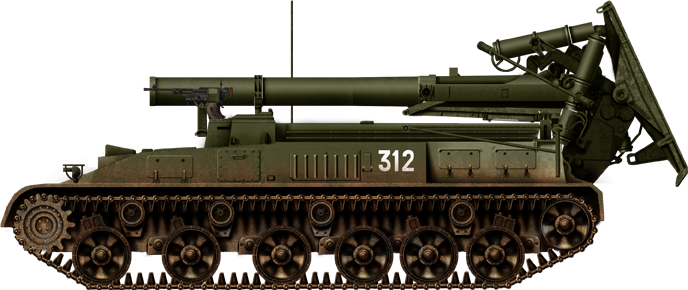
Basic vehicle, 1980s
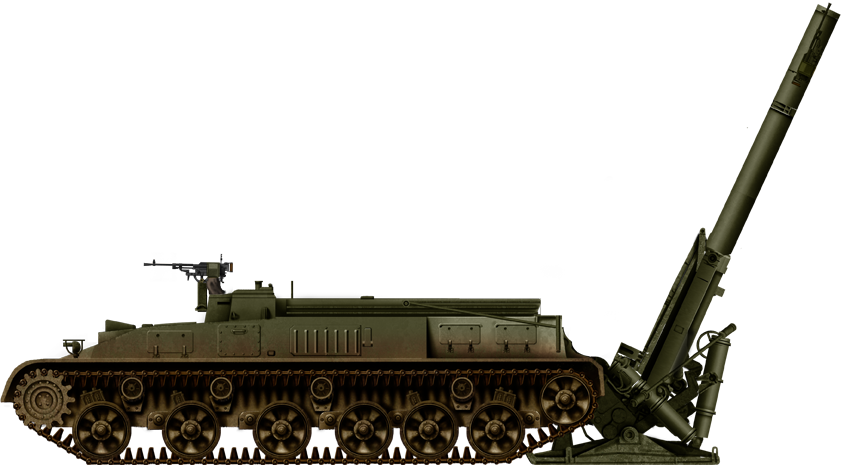
M240 Tulypan setup to fire
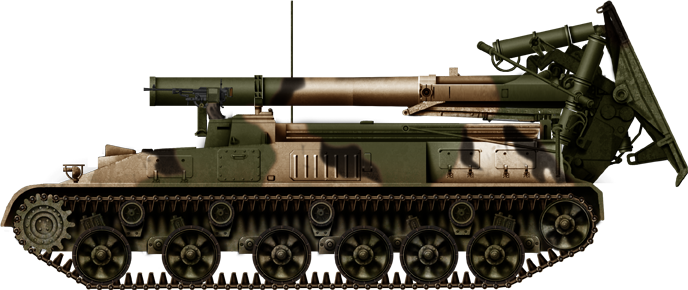
Camouflaged Russian vehicle, 1990s
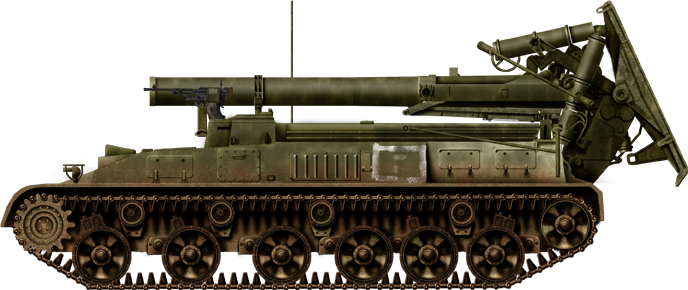
As seen in Ukraine, 2022
Gallery
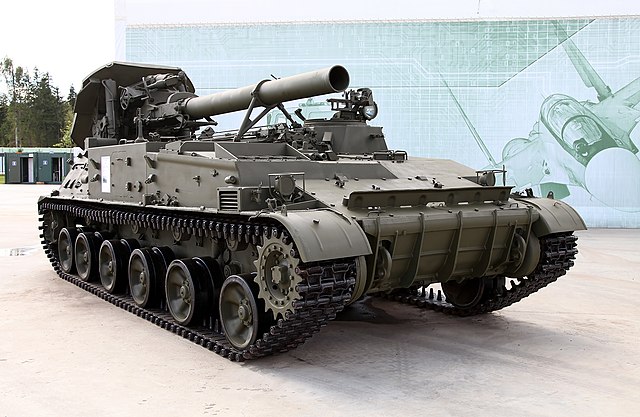
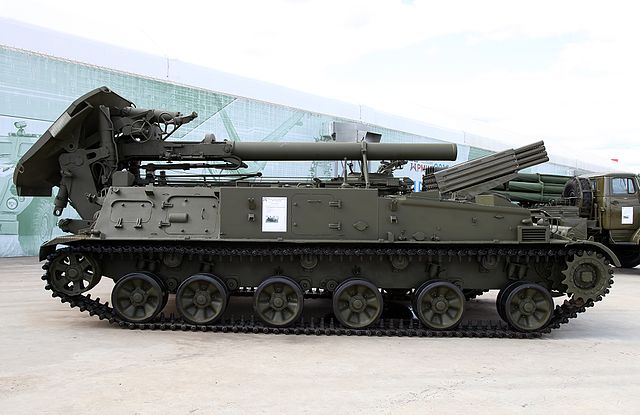
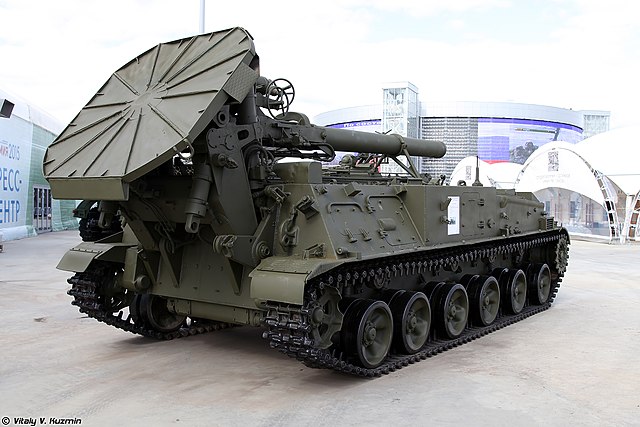
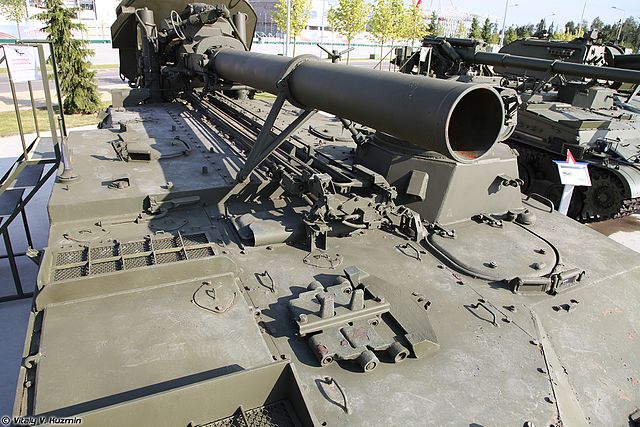
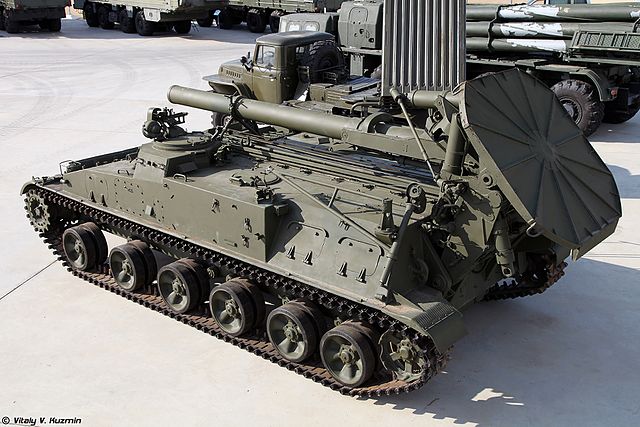
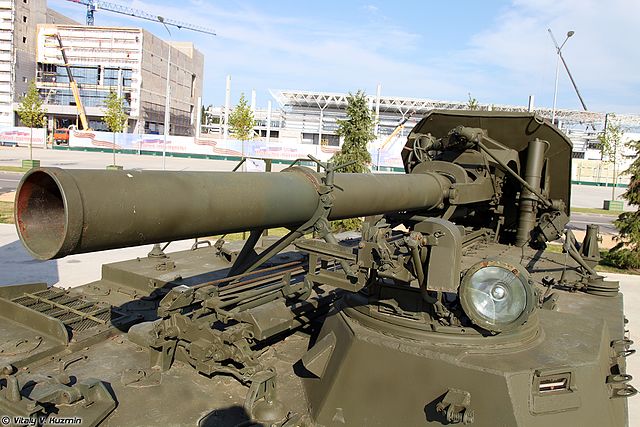
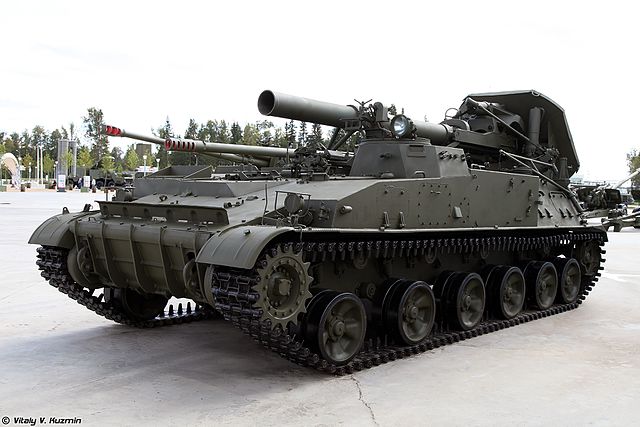
2S4 at Patriot Park, 2015, by Vitaly Kuzmin, cc
Details 1
Details 2
2B8_SAC-2S4
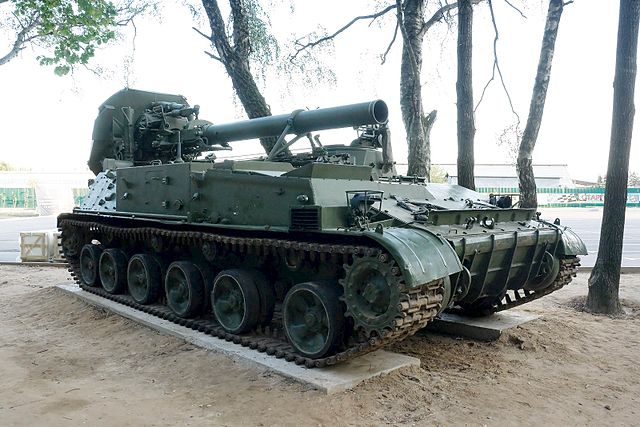
In a park, preserved
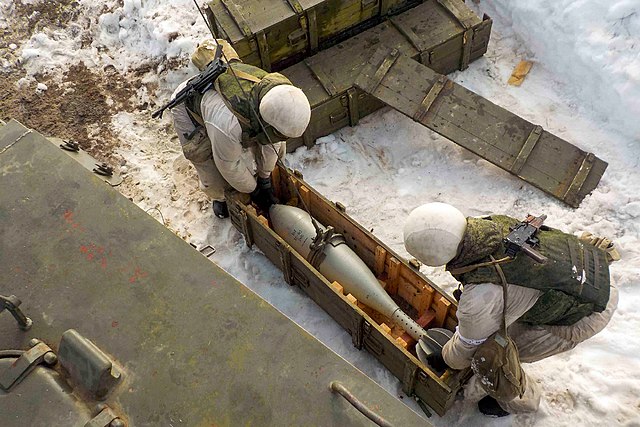
240mm ammunition
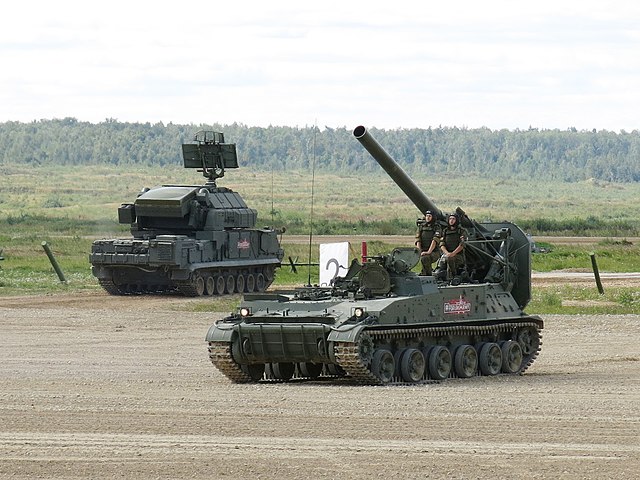
At Armiya 2018
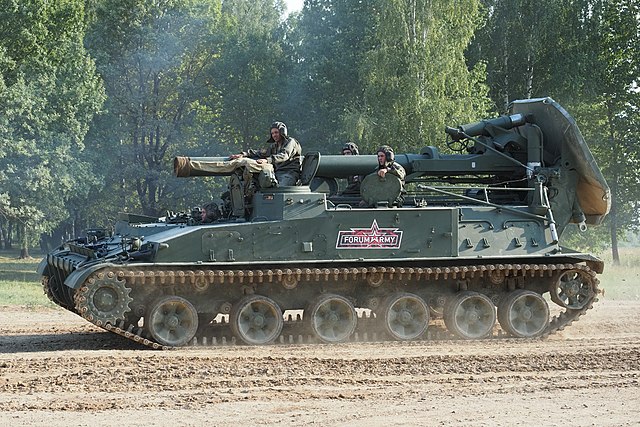
At Armiya 2022

From pinterest

From pinterest

From pinterest
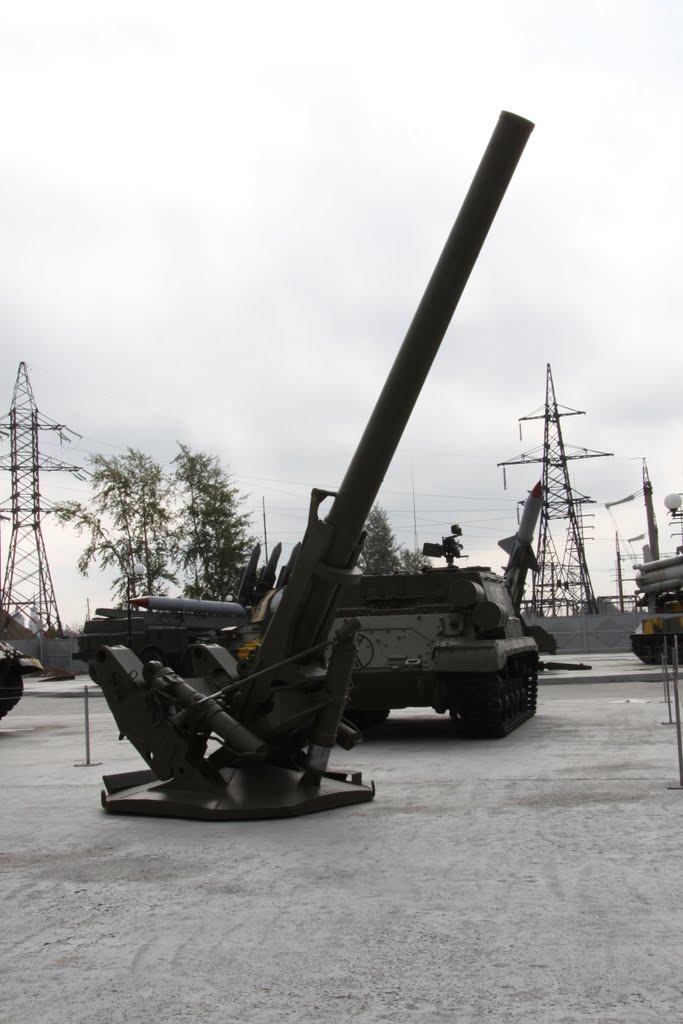

Cold War Tanks


































Cold war tanks posters

Cold War Main Battle Tanks

Cold War Soviet Army

